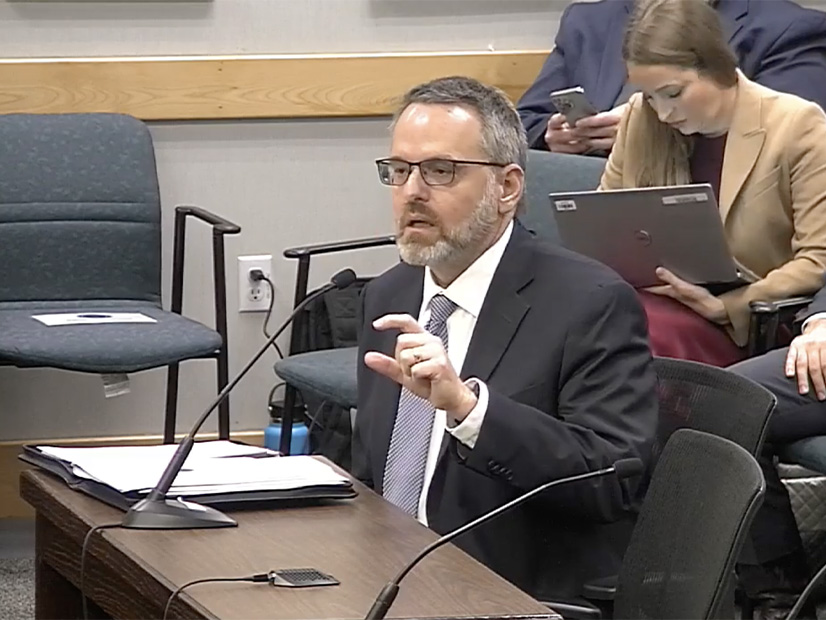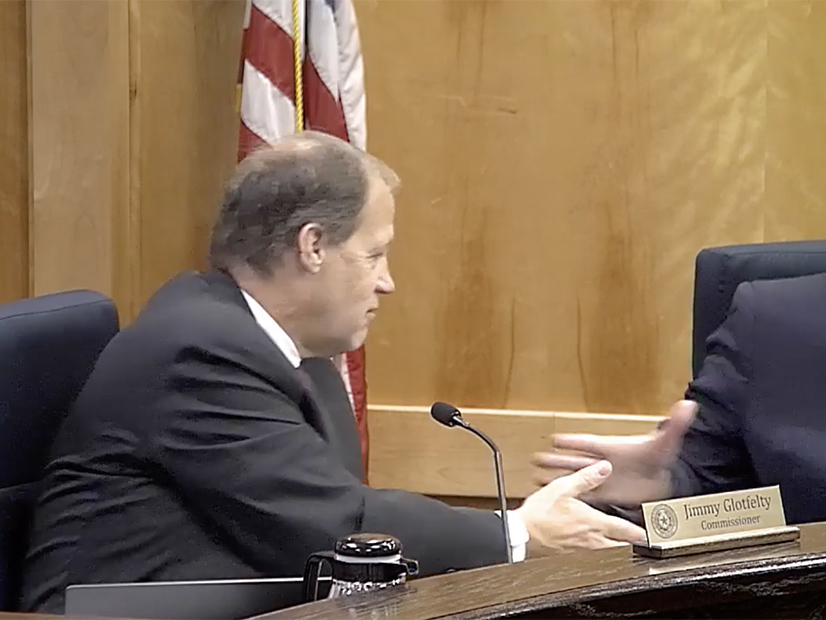ERCOT staff last week shared additional details with Texas regulators on the Sept. 6 frequency drop that lead to the grid operator entering emergency operations for the first time since the disastrous 2021 winter storm.
Dan Woodfin, ERCOT’s vice president of system operations, told the Public Utility Commission during its open meeting Dec. 14 that more than 500 MW of the system’s physical responsive capability (PRC) was incorrect and/or unavailable at a time when PRC was dropping to 2,100 MW (54444).
Woodfin said staff issued a request for information to entities contributing to PRC because “we had reason to believe” the information it was receiving from participants to calculate the reserves “was probably too high.” He said when frequency was at its lowest, calculated PRC was about 564 MW higher than what it should have been.
Thermal generators were reporting about 200 MW of capacity they could reach, an incorrect reading based on ambient air temperatures, Woodfin said.
“There’s always a little bit of error there,” he said.
Woodfin said another 200 MW were unavailable from curtailed wind resources that were unable to respond to frequency because their automatic controls didn’t work properly. Another 158 MW were unavailable from energy storage resources (ESRs) that had depleted their state of charge (SOC) and couldn’t regain their SOC quickly enough.
The frequency drop led to a dip in operating reserves below the 2,300-MW threshold, forcing ERCOT to issue a Level 2 energy emergency alert to maintain critical system frequency. The grid operator limited transmission from South Texas, trapping available wind generation along the Gulf Coast. (See ERCOT Voltage Drop Leads to EEA Level 2.)
Demand peaked at 82.7 GW on Sept. 6, setting a new high for September. The ERCOT grid was without 10.5 GW of unplanned outages at PRC’s lowest point, below the summer’s typical daily outages of about 12 GW, Woodfin said.
“I think these are things that are going to be more normal than not, at least until the transmission line from the south gets completed and some of the reliability issues get resolved. Long term. I hope this was a lesson,” commissioner Jimmy Glotfelty said.
The PUC has approved a pair of transmission projects designed to increase capacity between South Texas and the rest of the grid.
SOC Discussion Deferred Again
The commission granted ERCOT’s request to defer further discussion of a proposed rule change that sets a one-hour SOC for ESRs participating in two ancillary services and that Glotfelty has called “totally discriminatory” to the resources (54445).
The grid operator told PUC staff that the delay would give it a chance to better prepare its materials and give the commission and market participants to review and comment on its presentation materials. ERCOT is committed to filing a detailed presentation no later than Jan. 4.
The nodal protocol revision request (NPRR1186) has drawn opposition from storage developers during the stakeholder process. The PUC declined to approve the change during its last meeting and will take it up during its next open meeting Jan. 18. (See Texas Public Utility Commission Briefs: Nov. 30, 2023.)
Glotfelty accepted the delay, questioning whether ERCOT staff’s time couldn’t be better spent on other work.
“We want to make sure that we get all the information that ERCOT can provide before we take action on it,” Commissioner Lori Cobos said. “I really do hope that we get some good information from ERCOT to help us better understand the issues they’re seeing from their perspective.”
The PUC did approve two consulting firms’ work plan for a value-of-lost-load survey and study to determine the estimated value of reliability in the ERCOT region (55837).
The Brattle Group and PlanBeyond plan to survey retail customers using contact information provided by the grid operator in competitive areas and historical kilowatt-hour energy usage in competitive areas. The firms will have to depend on ERCOT’s relationships with non-opt-in entities, such as municipalities and cooperatives, and partner with them in their service territories to gather the same information.
The firms plan to complete the survey and deliver its results to the commission by the end of June. They say the study will be “fundamental” in supporting the PUC’s market design initiatives, including the development of a reliability standard.
Permian Basin Reliability Plan
Cobos and commission staff hosted a public workshop for oil and gas representatives, transmission and distribution utilities, and ERCOT staff in Midland on Dec. 12 to discuss reliability and electrification needs in the petroleum-rich Permian Basin (55718).
“Texas is the No. 1 energy-producing state in the United States, Texas energy powers the world, and the Permian Basin is a critically important part of this success,” Cobos said.
Legislation passed earlier this year requires ERCOT to work with transmission service providers to develop a reliability plan for the Permian Basin region. The plan must address the region’s transmission needs, additional generation to meet the energy industry’s demand and streamlining interconnection processes.
The plan is due to the PUC in July for stakeholder feedback. The commission then will consider the plan for its approval.
345-kV Project Approved
The PUC approved revised certificates of convenience and necessity for a 345-kV double circuit transmission line in West Texas needed to address reliability issues driven by rapid oil and gas load growth and to improve import capability into the Delaware Basin.
The joint project between Lower Colorado River Authority Transmission Services Corp. and Wind Energy Transmission Texas involves 68 miles of new circuits and substation upgrades. It’s estimated to cost $370 million and be in service in 2026, when the region’s load will exceed 4,000 MW (55120).



